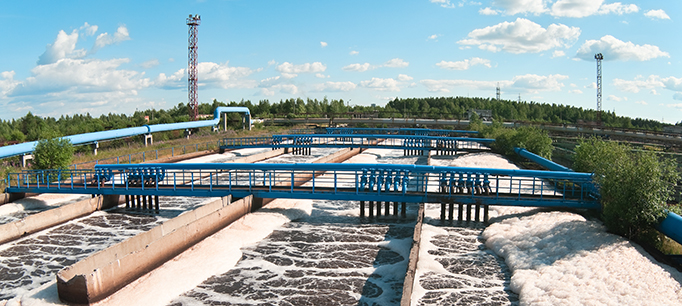High rates of water conservation helped California manage limited supplies during the 2012–16 drought. But conservation can have a downside. New research shows that indoor water conservation can reduce the quality and quantity of wastewater, making it harder for local agencies to use treated wastewater to augment their water supply.
We talked to two members of the research team about their findings: David Jassby, associate professor of civil and environmental engineering at UCLA; and Kurt Schwabe, professor of environmental economics and policy at UC Riverside and an adjunct fellow at the PPIC Water Policy Center.
Jassby summarized the problem: “In general, as people conserve water inside their homes, the concentration of contaminants in the wastewater goes up—organic matter, nitrogen, detergents, and more. All of these things have to be treated.”
Schwabe noted that in the past, recycled water was mostly used for irrigating nearby cropland and median strips—not drinking. But as treatment processes have improved and demand for water increased, recycled water has become an integral part of the drinking water supply in some areas, where it is used to replenish groundwater basins. In many communities, treated wastewater is discharged into rivers and streams and used by downstream entities that treat the water again.
Salinity is a particular challenge. “Most wastewater treatment plants can treat higher levels of nutrients, but they’re not designed to treat higher levels of salinity,” Schwabe said. “What this means is the water that is discharged into streams or to farms or into aquifers for groundwater recharge will be saltier, which reduces water quality and crop yields.”
Schwabe noted that while utilities can employ technical fixes to address drought-related wastewater quality issues, this doesn’t address the problem of quantity. Indoor conservation results in less treated water flowing into streams or available for reuse.
On average, only about 10% of municipal wastewater is reused in the US. Israel reuses 85–90% of its wastewater—perhaps the highest rate in the world, Schwabe said. California is adopting new rules on “direct potable reuse” of treated wastewater, which would enable cities to add treated wastewater directly into their water supply.
“Farmers in some parts of California are becoming increasingly reliant on treated municipal wastewater from neighboring urban areas. This is an effective strategy for dealing with water scarcity. But it also reveals that conservation—another effective drought strategy—might in some instances work at odds with wastewater reuse.”
Urban areas are also affected. For example, recycled wastewater is a significant portion of stream flow in the Santa Ana River in Southern California. Indoor conservation reduces water supply for communities in downstream reaches of the river.
Does this mean that people abandon conservation? The researchers say no. “Our results are intended to illustrate how different drought mitigation actions are related so agencies can plan, communicate, and coordinate in the most informed and cost-effective manner possible,” said Schwabe. “Conservation mandates that don’t recognize these linkages can have significant and negative consequences on the effort to reuse wastewater.”
Jassby noted that the place conservation happens is key: “When people are asked to conserve water, they should be encouraged to conserve water outside the home.”
More broadly, having water supply and wastewater treatment agencies cooperate in how they manage their systems can also help, Schwabe said.
Read “Do You Know Where Your Water’s Been?” (PPIC Blog)
Visit the PPIC Water Policy Center’s water supply resource page


